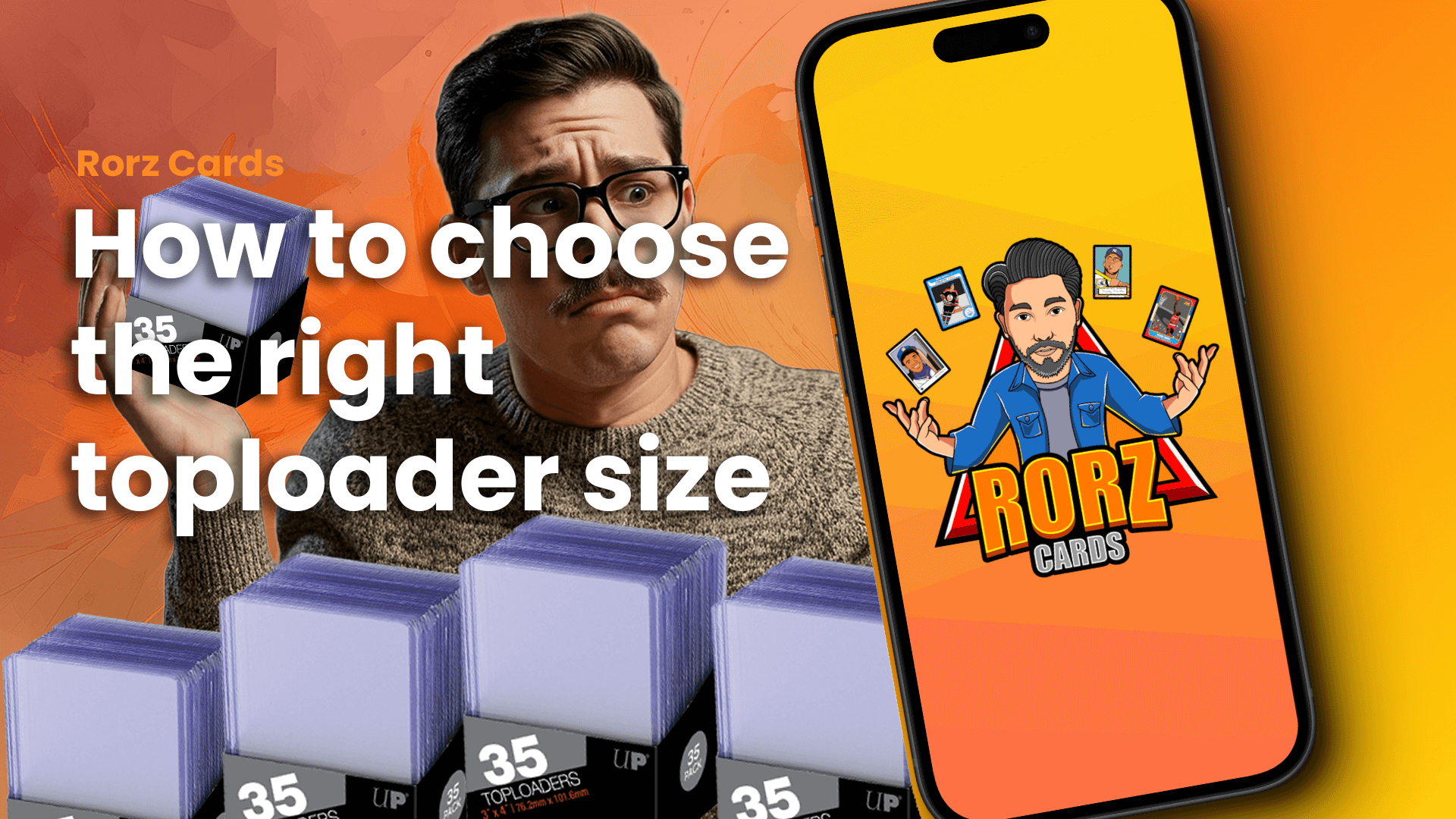
When it comes to protecting your sports cards, toploaders are easily the most efficient solution. They don’t take up a lot of space, they’re easily stackable, and cards stay well protected inside of them… well, that is, if you choose the correctly sized toploader for your particular card. If not, flip that toploader upside down and your potential PSA 10 just became a PSA 6 as it went tumbling to the ground! Trying to avoid that fateful event? Here’s a quick guide for choosing the correctly sized toploaders.
The Point Scale
Sports cards and other collectible cards use a numbered “point” scale to gauge card thickness. One point is equivalent to .001 inches or .0254 millimeters (1,000 points = 1 inch or 25.4 millimeters). “Point” is typically abbreviated to “pt” in the card world, so we’ll be using that abbreviation in this guide.
What Size Should I Use?
Before trying to jam your C.J. Stroud rookie card in a random toploader, you should know the thickness of the card to determine the proper size for your toploader. Luckily, BCW has a free printable thickness guide that you can access in moments! You can also find similar, more durable guides on cardstock at your local card shop or online. Armed with that tool, here’s a quick rundown of the correctly sized toploaders for your cards.
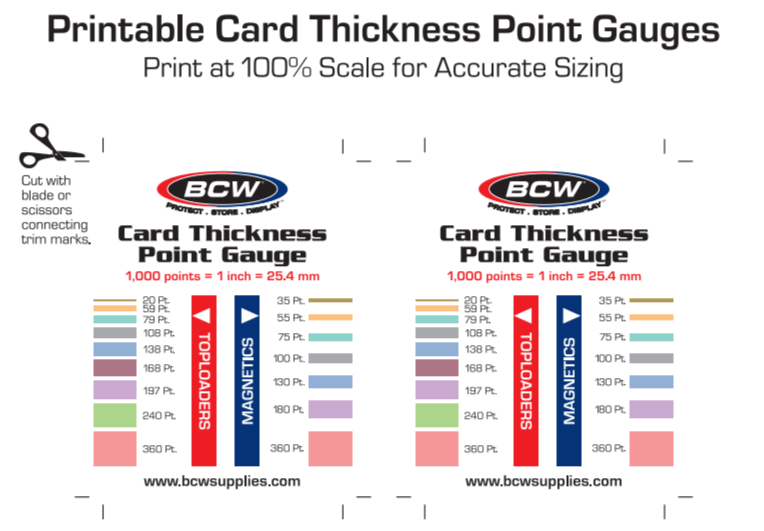
**Important note: some manufacturers label their toploaders by the size of the card (ex. 35pt, 100pt, etc.) and some label their toploaders by the size of the toploader itself (BCW, for example). In this guide we will use the standard card size because the round numbers are easier to remember. Just note that the toploaders are slightly thicker, obviously, than the cards themselves.**
35pt Toploaders: standard paper cards
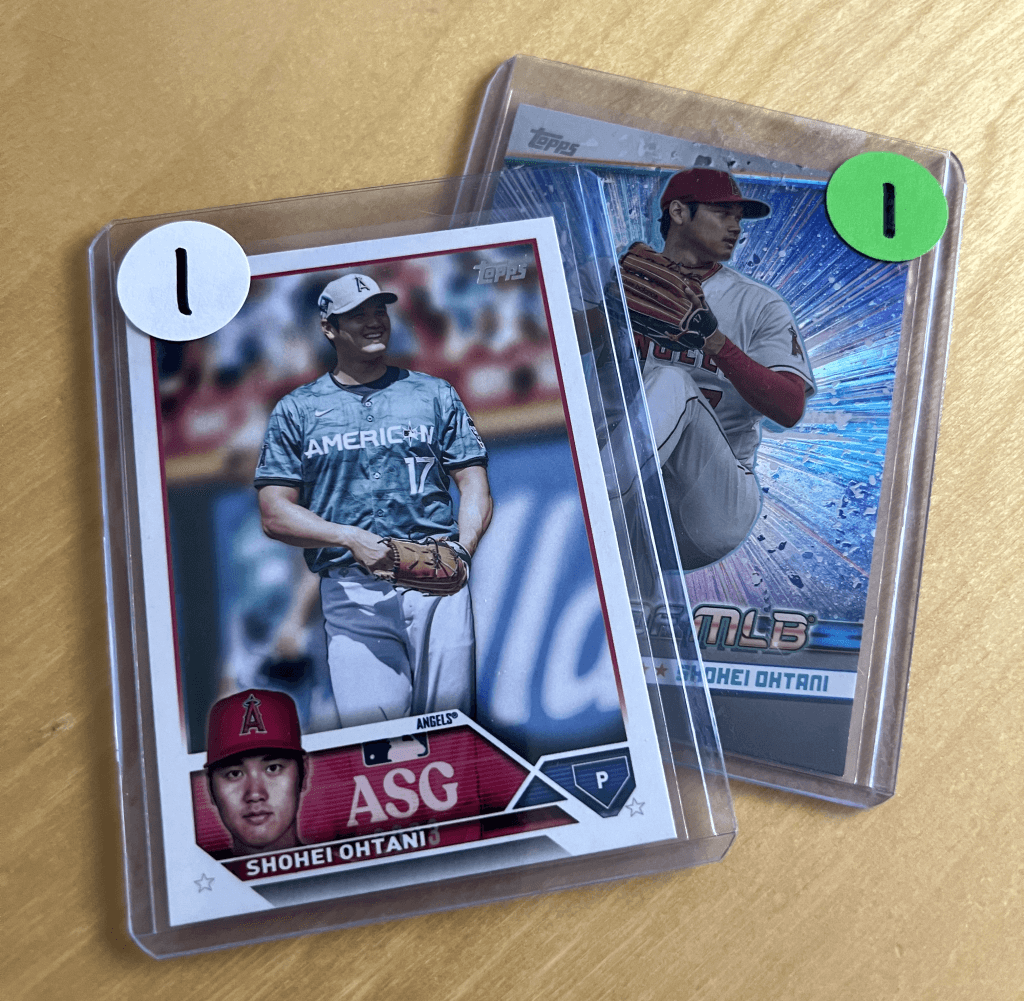
Topps & Bowman flagship series, Panini Score football, or any other modern card on standard sized paper stock should go in a 35pt toploader (typically the thinnest available option). Chrome cards can often squeeze in 35pt toploaders for a snug fit, but I wouldn’t recommend that.
55pt Toploaders: chromium stock
Topps Chrome, Panini Prizm, Donruss Optic and anything with a chromium stock of standard thickness should go in a 55pt toploader. Don’t be fooled by thicker chromium stock, as you’re going to be hard pressed to fit something like Panini Contenders Optic in a 55pt toploader.
75pt Toploaders: thick chromium stock
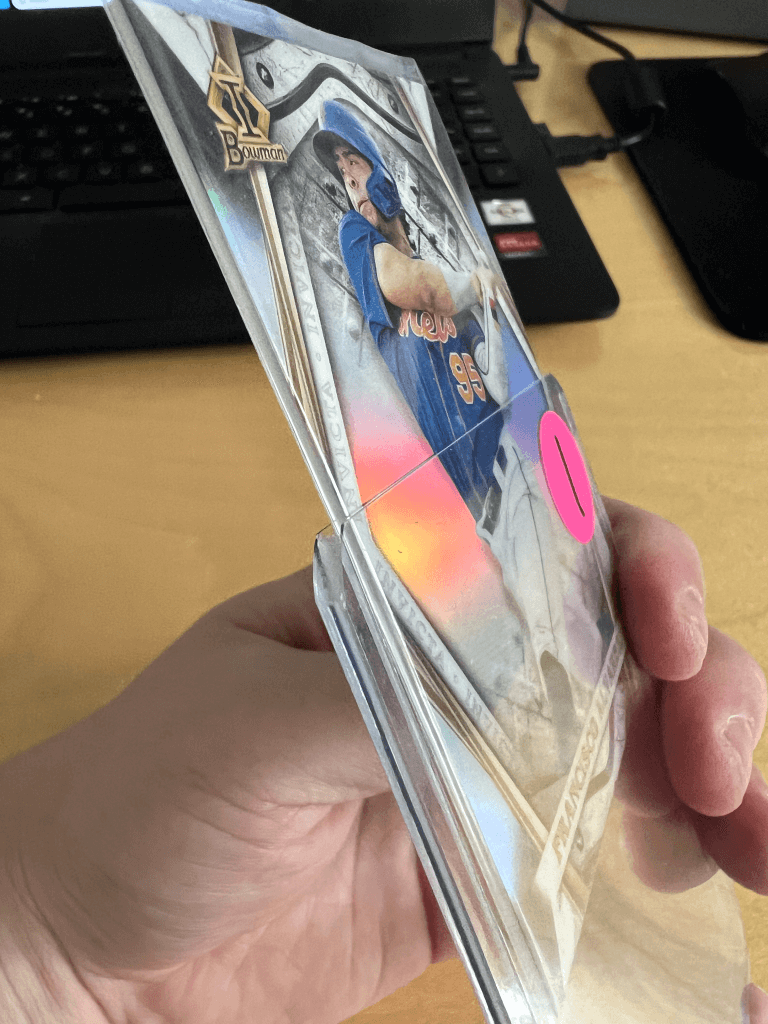
75pt toploaders can be somewhat difficult to distinguish from 100pt toploaders, but they are nice for products like Panini Contenders Optic, Upper Deck SPx hockey, and others. Using a 75pt toploader rather than a 100pt toploaders for these products ensures a more snug fit, but still not too tight.
100pt Toploaders: thick non-patch cards, thinner patch cards
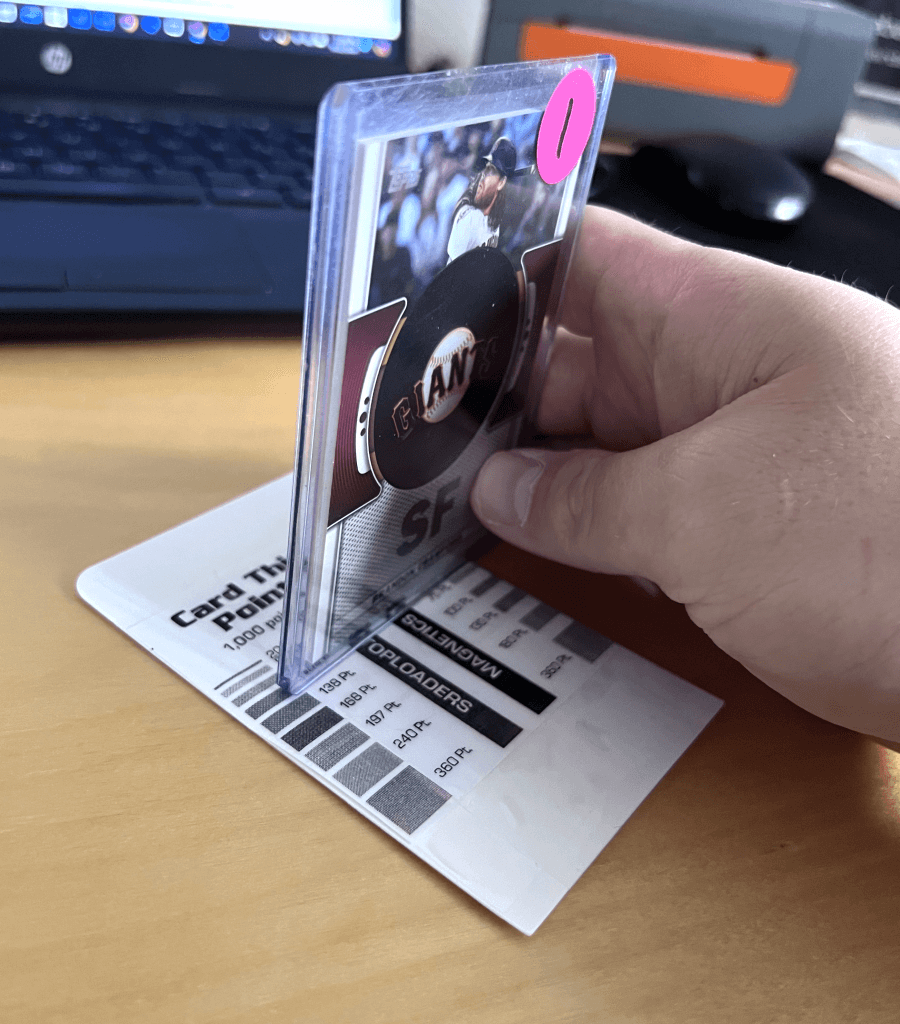
Panini USA Stars & Stripes Baseball patch cards, Topps commemorative logo patch cards, and Topps Triple Threads are examples of products/cards that fit well in a 100pt toploader. Since 55pt & 130pt toploaders seem to be more common, having some 100pt toploaders on hand can be great as a go-between if you don’t want any slippage from a 130pt toploader but don’t necessarily have a bunch of cards of 75pt thickness laying around. A 75pt card in a 100pt toploader should be fine, while a 100pt card in a 130pt toploader is going to move around a little bit more.
130pt Toploaders: standard patch cards
Panini Select patches & autos, Panini Spectra patch cards, and a majority of run-of-the-mill patch cards are going to fit well in a 130pt toploader. Be careful, though… some cards are just a bit larger (this is where the guide is helpful) and you might have yourself in a precarious card situation if you try to jam a 140pt card in a 130pt toploader. See below for solutions to that predicament.
140-168pt Toploaders: thicker patch cards
National Treasures and other more high-end brands make cards that toe the line and don’t often fit well in a 130pt toploader. There are some options here. BCW makes 138pt toploaders (other companies may round to 140pt), but they also make a 168pt option that still houses these cards just fine. I like a little breathing room for my thicker cards so that it’s easy to take them in and out of their toploaders, but obviously, you don’t want any slippage.
240-360pt Toploaders: the big boys
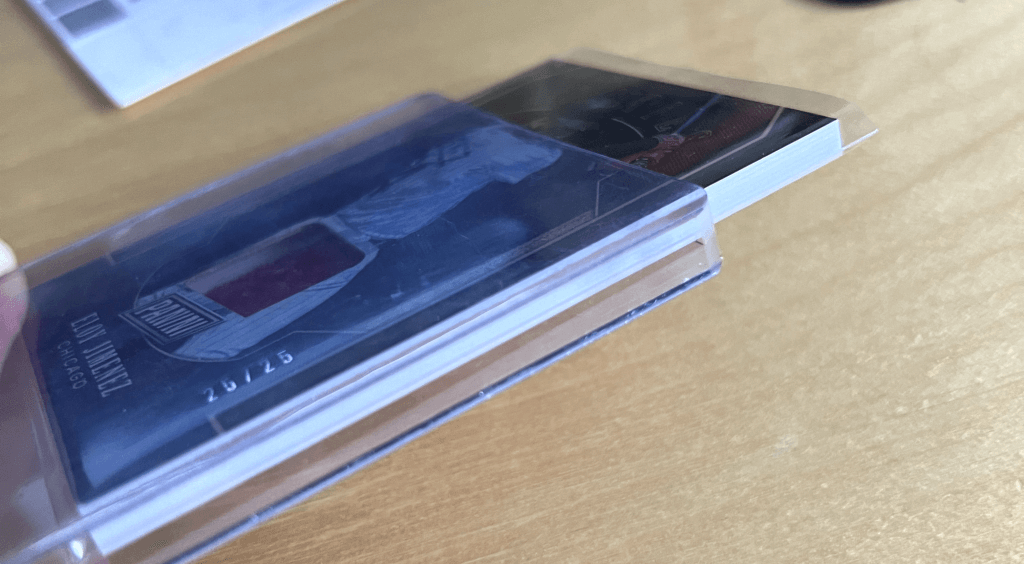
At this point on the scale, hopefully you should be able to figure out what size toploader you need. Not many brands venture into this territory of thickness, but the general rule (with cards of any size) is this: DO NOT TRY TO JAM THE CARD INTO THE TOPLOADER. If you’re meeting resistance, you probably need to go the next size up. BCW does have a nice middle-ground 197pt toploader that works for most cards of extreme thickness. If you need a toploader above that size, it’s usually for a card from a specialty set, and if you’re messing around in that ballpark, my guess is you know what size toploaders fit your cards.
Funky Stuff
Mini cards, booklet cards, oversized cards, even elongated matchbook-type cards… they all have toploaders available, believe it or not! A simple Google search will show you toploaders for cards of all styles & sizes.
Other Pointers
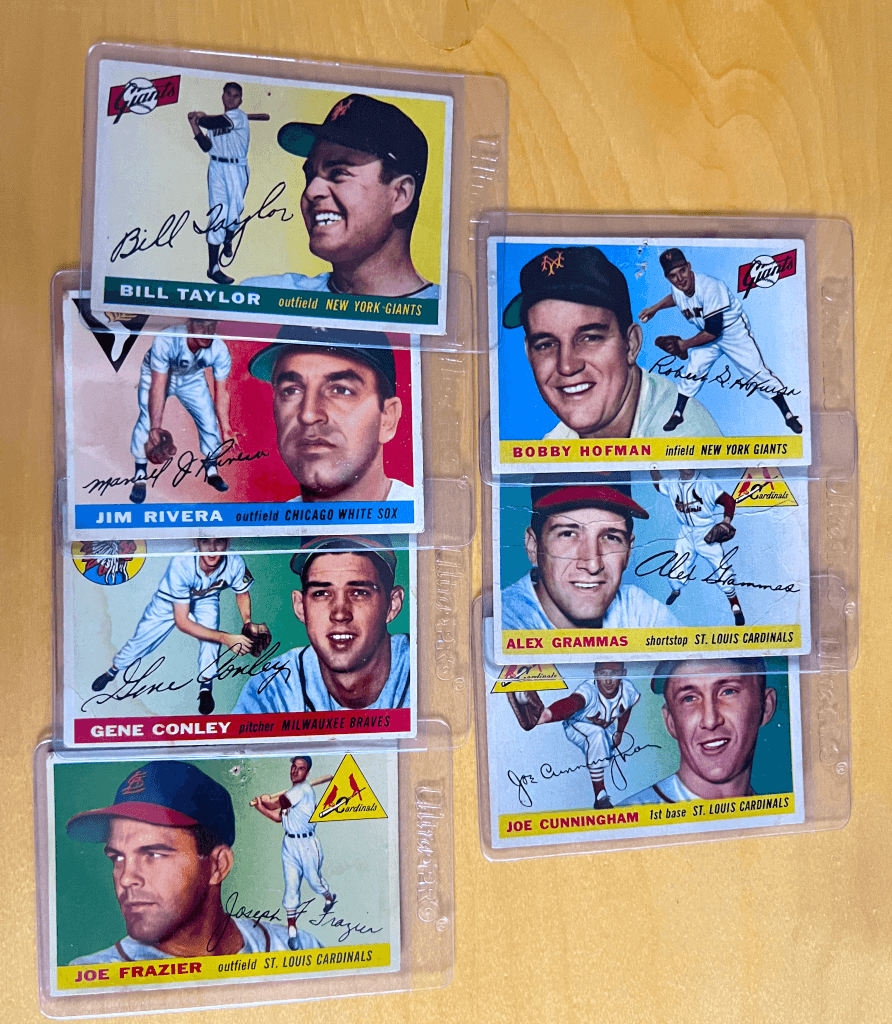
- Pick a brand: There are no hard and fast rules when it comes to toploader sizes. That being said, it could be beneficial to pick a brand and roll with it. BCW & UltraPro are both solid choices when it comes to toploaders, but I’d lean toward BCW with the added piece of knowledge that their penny sleeves are top quality. I have not found a penny sleeve that slides as smoothly as BCW, and using penny sleeves & toploaders of the same brand adds a further layer of confidence that you’re securing your cards accurately. And that being said…
- Know your penny sleeves: There are two common sizes of penny sleeves: standard & thick. Standard sized penny sleeves work for most cards up to about 75pt, but cards with over 75pt thickness should be housed in a thick (130pt) penny sleeve, even if there is plenty of room to spare. Oh, and NEVER PUT A CARD IN A TOPLOADER WITHOUT A PENNY SLEEVE! Trust me.
- Vintage cards have some exceptions: Some vintage cards, mostly pre-1965, don’t necessarily align with these rules due to poor condition or the lack of standard card sizes during that time. Toploaders aren’t always the best solution for these cards. A semi-rigid card holder will give your vintage card a secure home without the terror of fitting those frayed edges in a penny sleeve and turning that SGC 2 into a SGC 1. Many of these cards technically can still fit in toploaders, but just take note… are you holding a ’54 Topps Jackie Robinson or a ’57 Topps Billy Pierce (no disrespect, Billy). Yeah, save that toploader for Billy.
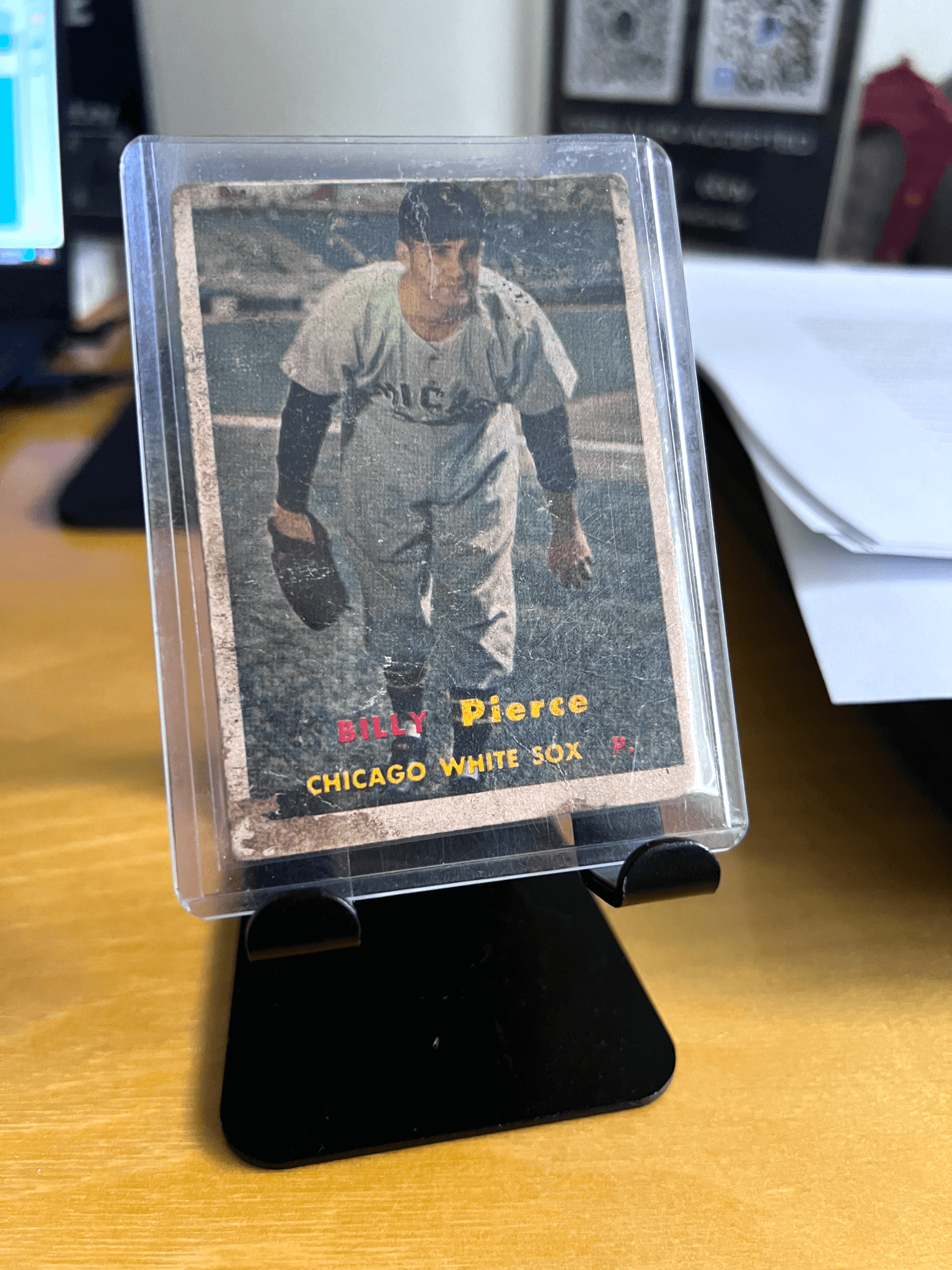
To close, this is just a guide. Use common sense, and never try to jam your cards into toploaders. Try to have some toploaders of most sizes on hand (check Facebook Marketplace to see if anybody is offloading supplies for cheap! I’ve found plenty of toploaders & other hobby supplies that way). If you don’t, use the next size up until you can get the proper size. Cheers to card security!
